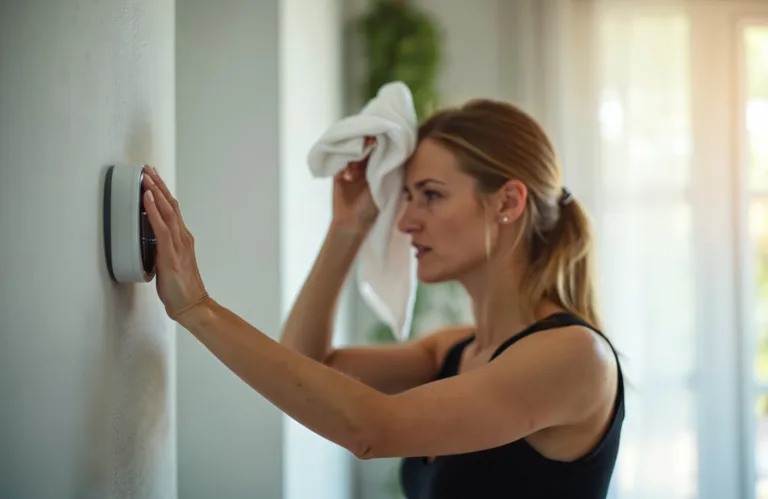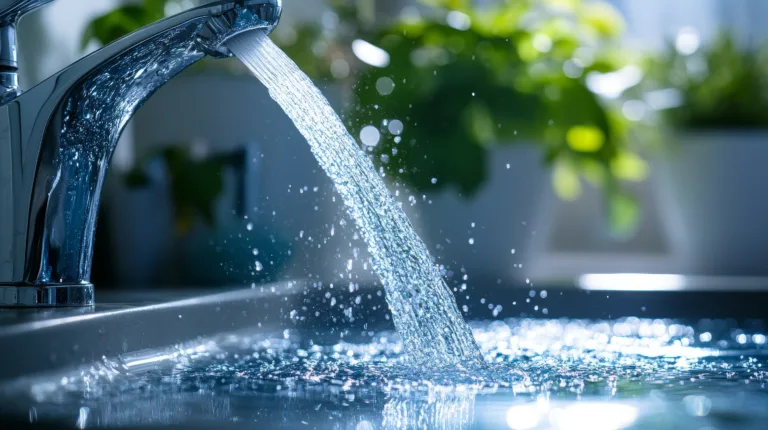When it comes to your home’s plumbing, everything operates on a simple principle: “Sh*t runs downhill.” This age-old saying perfectly summarizes how drain lines function. In this blog, we’ll break down how drain systems are set up in homes and how to identify whether you’re dealing with a single drain clog or a mainline blockage. Knowing the difference can save you time and money. Knowing when a clogged drain is an emergency is crucial for the integrity of your home’s plumbing system. Let’s take a look at how your home’s plumbing system is set up to help you determine when to call a professional plumber.
How Are Drain Lines Set Up in Houses?
Branch Lines
- Individual Fixtures: Each sink, toilet, and shower has its own smaller drain line that connects to a larger branch line.
- Venting System: Drain lines are equipped with vents to prevent vacuum pressure and ensure smooth water flow. These vents allow air to enter, facilitating proper drainage.
Main Line (Sewer Line)
- The Backbone: All branch lines eventually merge into the mainline, which carries wastewater out of your home to the municipal sewer system or your septic tank.
- Gravity at Work: The “downhill” principle is critical here—the mainline relies on a consistent downward slope to move waste effectively.
Cleanouts
- Access Points: Strategically located cleanouts provide plumbers access to inspect and remove blockages from the mainline or specific branch lines.
How to Tell If You Have a Single Drain Clog or a Mainline Clog
Not all clogs are created equal. Here’s how to figure out what’s causing your drainage problems:
Signs of a Single Drain Clog
- Localized Issue: If only one fixture (e.g., a bathroom sink or kitchen drain) is slow or backed up, the issue is likely confined to that drain.
- Other Fixtures Work Fine: When no other drains in the house are affected, it’s safe to assume the problem is isolated.
- DIY Fix Possible: These clogs are often caused by hair, grease, or small debris and can sometimes be cleared using a plunger or drain snake.
Signs of a Mainline Clog
- Widespread Backups: If multiple fixtures across the house (e.g., toilets, sinks, and showers) are slow or backing up, the issue is likely in the mainline.
- Water Backs Up Elsewhere: Water might back up into lower drains, such as tubs or basement floor drains, when other fixtures are used.
- Unpleasant Odors: A sewage smell coming from drains or in your yard often indicates a significant blockage in the mainline.
- Toilet Troubles: Toilets connect directly to the mainline, so backups in multiple toilets are a red flag.
Why the Saying “Sh*t Runs Downhill” Matters with Your Home’s Plumbing
This phrase highlights the gravity-driven design of plumbing systems. Wastewater flows from higher fixtures (like upstairs sinks) to lower ones (like basement floor drains) and eventually exits through the mainline. If a clog obstructs this downhill flow, water and waste back up at the lowest points in your home. This is why backups in tubs or showers often point to a mainline issue.
What to Do Next
For Single Drain Clogs
- DIY First: Try plunging the drain or using a drain snake. For greasy or grimy clogs, a mixture of hot water, baking soda, and vinegar might help.
- Call a Plumber If Needed: If DIY methods don’t resolve the issue, call a professional to avoid further damage.
For Mainline Clogs
- Always Call a Professional: Mainline blockages require specialized tools, like augers or hydro-jetting, to clear effectively.
- Avoid DIY Repairs: Attempting to clear a mainline clog without proper equipment can worsen the problem or damage your pipes.
Questions Our Customer Service Representatives Will Ask
To determine whether your clog is an emergency or can be addressed during regular service hours, our team will ask:
1. Which fixtures are affected? Are you experiencing issues with just one drain or multiple drains in your home?
-
What it means: If only one drain is affected, it’s likely a single drain clog. Multiple affected fixtures often point to a mainline clog.
2. What happens when you use other fixtures? Does water back up into lower drains (e.g., tubs or showers) when you flush the toilet or run a sink?
- What it means: Water backing up into lower fixtures is a classic sign of a mainline clog, as the water has nowhere else to go.
3. Do you notice any unusual smells? Are there sewer odors coming from your drains or elsewhere in your home?
- What it means: Sewer smells often indicate a significant blockage or issue with the mainline, as trapped waste gases are being pushed back into the home.
4. How long has the issue been occurring? Did the problem start suddenly, or has it been getting worse over time?
- What it means: A sudden problem could indicate a blockage caused by a foreign object, while a gradual issue may suggest a buildup of debris or roots in the line.
5. Have you tried any DIY methods? Have you attempted to clear the clog using a plunger, drain snake, or any other tools?
- What it means: Knowing what has already been tried helps the technician understand the severity of the issue and determine the next steps.
6. Have there been any recent plumbing issues?
- For example, have you experienced flooding, pipe repairs, or construction near your property that might impact your system?
- What it means: Recent plumbing work or environmental changes can provide clues about the cause of the clog, such as a shifted pipe or damaged line.
These questions help us determine whether your situation is urgent and guide our technicians to provide the most efficient service possible.
The Importance of Video Inspections
For mainline issues, video inspections are one of the most effective tools a plumber can use. Here’s why they’re crucial:
Pinpointing the Problem
A video inspection uses a small camera attached to a flexible cable to visually inspect the inside of your pipes. This allows plumbers to locate the exact spot and nature of the blockage, whether it’s caused by tree roots, a collapsed pipe, or a buildup of grease.
Saving Time and Money
By identifying the issue accurately, video inspections eliminate the guesswork. This minimizes unnecessary digging or repairs, saving you both time and money.
Preventing Future Issues
A video inspection doesn’t just identify current clogs—it can also reveal developing problems, such as corroding pipes or small cracks that could become major issues down the road.
Peace of Mind
Knowing exactly what’s going on in your pipes gives you confidence that the recommended repair is necessary and accurate. It’s a transparent way to understand the problem.
Hansen Family Plumbing & Air provides free camera inspections with every drain call to ensure your lines are healthy and the blockage has been removed completely!*
Our Advice — Always call a Professional Plumber for Any Drain Issue
Understanding how your home’s plumbing is set up can save you time, frustration, and money when dealing with clogs. If you’re unsure whether the problem is a single drain or your mainline, look for signs of widespread backups and call a professional for assistance.
Need help with a stubborn clog? Contact our experienced team today for fast and reliable service!
*Free camera inspection subject to change based on current promotions.

